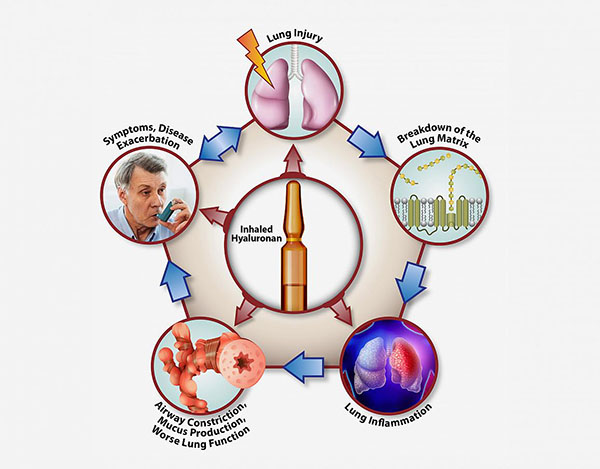IRP study shows hyaluronan is effective in treating chronic lung disease
Researchers at the National Institutes of Health and their collaborators found that inhaling unfragmented hyaluronan improves lung function in patients suffering from severe exacerbation of chronic obstructive pulmonary disease (COPD). Hyaluronan, a sugar secreted by living tissue that acts as a scaffold for cells, is also used in cosmetics as a skin moisturizer and as a nasal spray to moisturize lung airways. Utilized as a treatment, hyaluronan shortened the amount of time COPD patients in intensive care needed breathing support, decreased their number of days in the hospital, and saved money by reducing their hospital stay.
The study, published online in Respiratory Research, is a good example of how examining the impacts of environmental pollution on the lungs can lead to viable treatments. Several years ago, co-senior author Stavros Garantziotis, M.D., medical director of the Clinical Research Unit at the National Institute of Environmental Health Sciences (NIEHS), part of NIH, showed that exposure to pollution causes hyaluronan in the lungs to break down into smaller fragments. These fragments irritate lung tissue and activate the immune system, leading to constriction and inflammation of the airways. He determined that inhalation of healthy, unfragmented hyaluronan reduces inflammation by outcompeting the smaller hyaluronan fragments.
Garantziotis offered an analogy for how the inflammation occurs. He said hyaluronan surrounds cells like mortar surrounds bricks. Introducing pollution causes cracks in the mortar, breaking it into smaller chunks.
"These smaller chunks irritate the body and activate the immune system, leading to inflammation," Garantziotis said. "Reintroducing the full-length hyaluronan, like a fresh coat of mortar, means it is less irritating and reduces the amount of inflammation."

Research shows that inhaling hyaluronan interferes at almost every step of the COPD cycle, making it a potent treatment for chronic lung disease.
This page was last updated on Friday, January 21, 2022